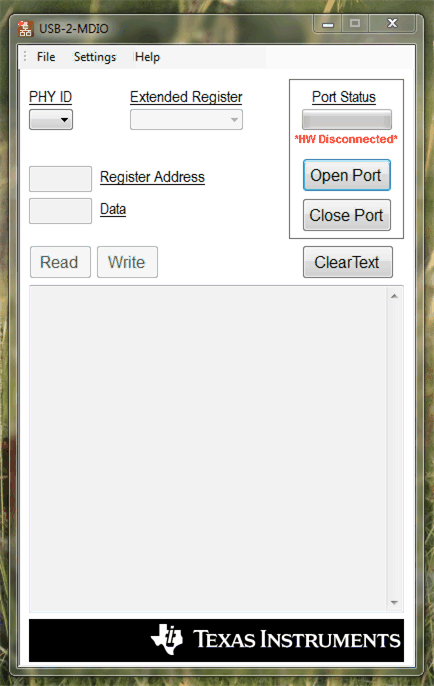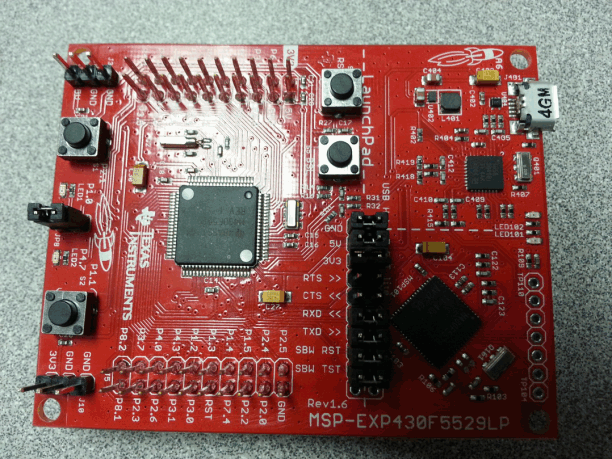SNLA246C October 2015 – April 2024 DP83867CR , DP83867CS , DP83867E , DP83867IR , DP83867IS
- 1
- Trademarks
- 1Introduction
- 2Troubleshooting the Application
-
3Application Specific
Debugs
- 3.1 Improving Link-up Margins for Short Cables
- 3.2 Improving Link Margins across Different Channels
- 3.3 Link up in 100Mbps Full Duplex Force Mode
- 3.4 Unstable Link Up Debug in 1Gbps communication
- 3.5 DP83867PHY and DP83867PHY Cannot Link Up in 1Gbps
- 3.6 Compliance Debug
- 3.7 EMC Debug
- 3.8 Tools and References
- 4Conclusion
- 5References
- 6Revision History
3.8.1 DP83867 Register Access
If register access is not readily available in the application, USB-2-MDIO GUI is available from TI and can be used with an MSP430 Launchpad, and purchased through TI.com. The GUI supports reading and writing registers as well as running script files. USB-2-MDIO GUI can be used with the DP83867 and the other devices in TI's Ethernet portfolio. The USB-2-MDIO User's Guide and GUI are available for download at: USB-2-MDIO serial management tool.
 Figure 3-1 USB-2-MDIO GUI
Figure 3-1 USB-2-MDIO GUI Figure 3-2 MSP430 LaunchPad
Figure 3-2 MSP430 LaunchPadFollowing is an example script that can also be found in the USB-2-MDIO GUI in the Help menu:
// This is how you make a comment. All scripts must start with 'begin'
begin
// To read a register, all you need to do is put down the 4 digit
// HEX value of the registers (from 0000 to FFFF)
// Example to read registers 0001, 000A, and 0017
0001
000A
0017
// To write a register, all you need to do is put down the 4 digit
// HEX value of the register (from 0000 to FFFF) followed by the
// HEX you desire to configure the register to (from 0000 to FFFF)
// Example to write 2100 to register 0000 and
// Example to write 0110 to register 0016
0000 2100
0016 0110
// You must end the script by adding 'end' once you are finished
end
The Serial Management Interface defined by IEEE 802.3 is a single master bus. The MDC clock is generated by the bus master, typically an Ethernet MAC. To use the USB-2-MDIO GUI, connections must be made directly between the MSP430 Launchpad and the DP83867 MDIO and MDC pins. Specifically, pins 4.1 to MDC, 4.2 to MDIO, and any GND to the ground of the PHY will allow the MSP to read and write the PHY's registers via USB-2-MDIO.